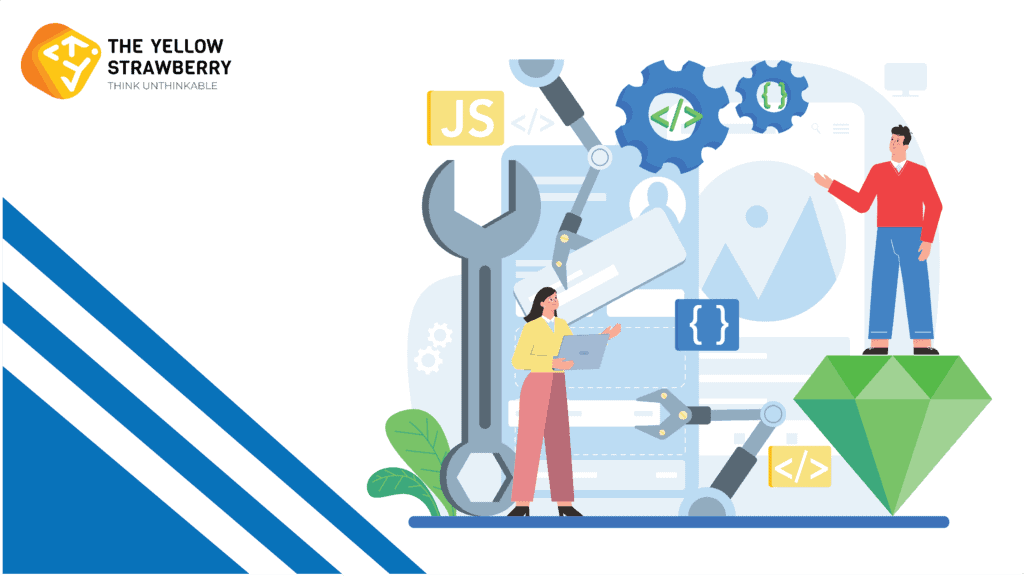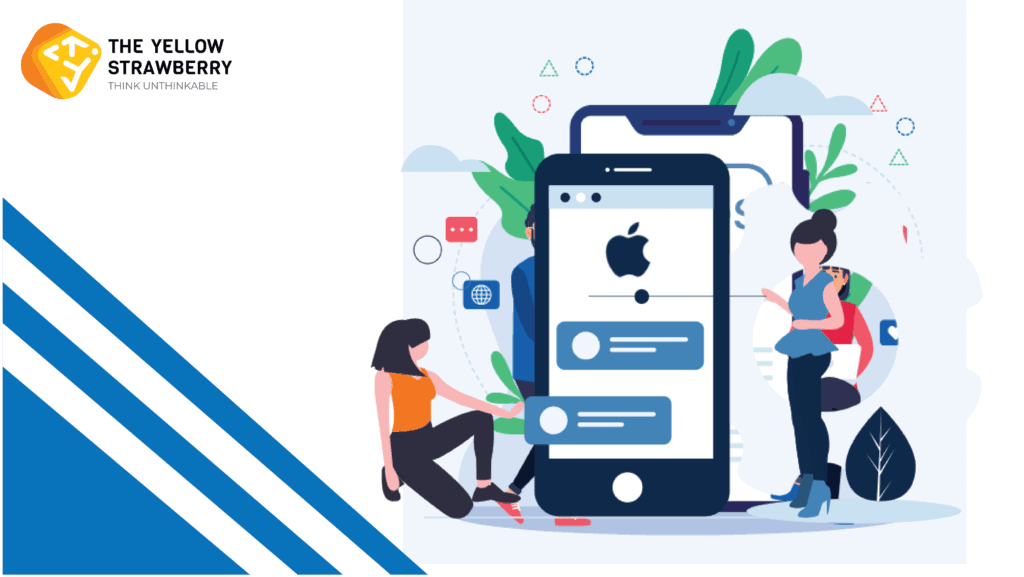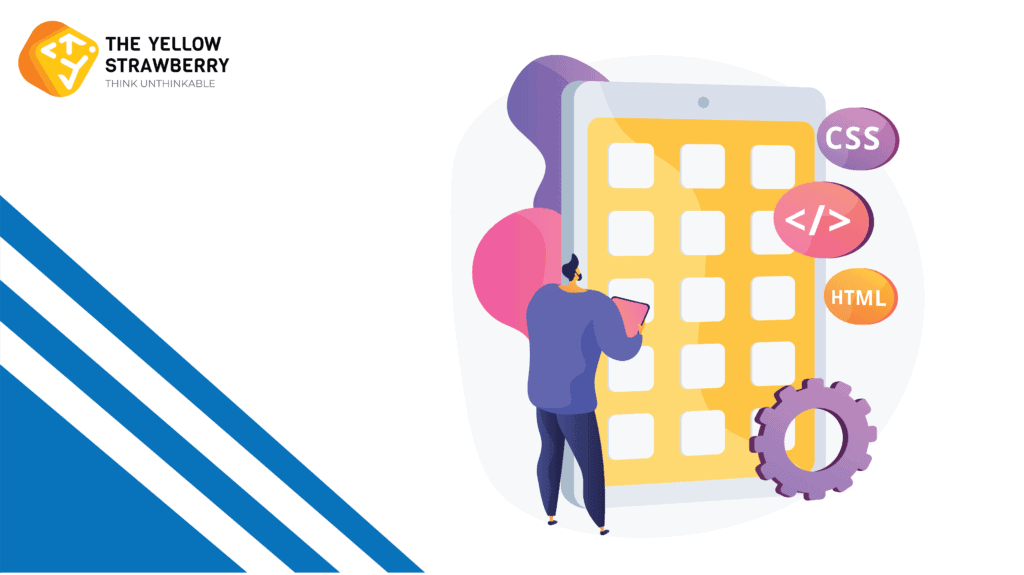Web development is the process of organizing, creating, and arranging information online. Today, creating a website extends beyond aesthetics to incorporate the website’s whole operation. Web design also involves web applications, mobile apps, and user interface design.
Web development, in a general way, refers to all of the actions, changes, and operations necessary to design, maintain, and manage a website to guarantee optimal performance, user experience, and speed.
It may also include, but is not required to include, all of the strategic measures required to assure its proper ranking in search engine results. Those activities are often associated with a distinct specialty, notably search engine optimization (SEO)
Web development is also referred to as website development, and the experts who manage a website are referred to as web developers or (more popularly) web devs.
Developers create web pages and apps for the Intranet, a private network, or the Internet throughout the Web Development process. Web development does not necessarily focus on the design of a website; rather, it is mostly focused on the programming and coding portion, which is the primary cause for the website’s functionality.
Web development programming languages
Web development may also refer to programming languages. Websites are built using a variety of computer languages.
Java, PHP, ASP, HTML, Perl, and other programming languages are examples of this. Additionally, several programming languages are utilized in server-side development. This is the programming language that allows the website to connect to a web server and accept visitor requests.
For many businesses, their website has evolved into a storefront, business card, and perhaps their sole point of contact with their clients. As a result, not only do first impressions matter, but so do how entertaining the content is, how responsive the site is, and how simple it is to navigate.
We’ve all visited websites that disappointed us and caused us to hastily click away. Similarly, we’ve seen websites that pleased us with their flashy media, intelligent features, and clean style, and we’ve fantasized about incorporating them into our own company website. But all of this comes at a cost, one that many small firms may be unable to pay.
Factors Influencing Cost Of Website Development
In this post, we will look at five areas that will frequently influence the majority of a website’s development cost and should be carefully evaluated for the best results.
-
Components and Complexity
It may go without saying that the more sophisticated a website design is, the more expensive it will be to develop. This can include page layouts, site navigation, brand design, online tools, and shopping carts. An attractive website may excite your customers, but will it force them to buy? What do they value the most? Maybe it’s just being able to find what they’re looking for as soon as possible and with as little distraction as possible. Some simple client or family and friend research may help you reduce your objectives and focus on the important deliverables for your website.
-
Platform and Technology
The underlying technology on which the website is constructed will undoubtedly have an influence on prices. Using technologies that most developers are comfortable with, can be a good choice. It will have an influence on many areas other than cost and it will not only make website development cheaper but also reduce the time required to develop them.
Another thing to think about is what desktops and mobile devices the website needs to work on to guarantee that no functionality is lost. Most websites can now be adapted to function with desktops, laptops, iPads, and mobile devices, as well as multiple operating systems and browsers, but it is still worth noting.
-
Resources and Materials
The web developer will be one of the cost components, but comparing them on pricing should be done with other considerations in mind. Where is the developer based, how much experience do they have, and how accessible and communicative are they? Will they be able to provide guidance and help, as well as collaborate on future developments? Making sure they have a good reputation is a good place to start, and interviewing them may help signal whether they will be a pleasant person to work with.
Another thing to consider is who will handle the website development project. If other parties are involved, such as those providing pictures, logos, payment mechanisms, or other factors, you may wish to outsource this to guarantee it is coordinated and delivered effectively. Similarly, who will be testing and signing off on the website to ensure that it looks and functions properly?
-
Hosting and Domain
It’s pointless to create an extravagant house if the foundations aren’t supportive. The same is true for a website. A website must be responsive and accessible when your consumers want it. Making sure the code works efficiently and the website is properly hosted will improve the user experience. If your business takes off as planned and your website experiences a surge in traffic, will your website and host handle the extra traffic? Consider a scalable system that can be scaled up and down as needed.
You should test your website, particularly to determine if graphics or videos load rapidly. This is best done on several devices, at various times, and in various locations to give you an idea of your customer’s experience.
-
Security and Safety
As technology advances, more and more sophisticated security dangers threaten the integrity of a company’s website. Websites must avoid security breaches ranging from malware and viruses to dangerous applications and the threat of hackers. Businesses should have SSL certificates on their websites to lessen the risk of browser-based attacks. This is especially crucial if you are processing client data or payment information. The GDPR requires you to protect your clients’ information, and having a secure website will ensure them and attract new customers to engage with you.
There is no right or wrong response to any of these questions, but they are all worth careful thought. This will guarantee that you are providing the greatest possible experience for your website’s varied visitors while also safeguarding them and your organization. By devoting the time to this additional thought and planning, you can still create a professional-looking website at a more reasonable price.
Why Choose Us?
Here is why you should choose The Yellow Strawberry as your wearable app development partner:
-
The Yellow Strawberry is the most reputed wearable apps development company with years of experience and a profound portfolio of satisfied clients to add a feather to our success. We have complete knowledge of all aspects of wearable apps design and deployment. You can check out our testimonials for a fair idea about the quality of our work and the standard of our services.
-
All the packages we offer as the best wearable app development company are reasonable and affordable enough for both startups and established brands. To avail of premium wearable app design services at affordable prices, connect with us today.
-
We are the best wearable app development company and have a team of professionals dedicatedly to working on the development and launch of wearable apps. The team of proficient tech stackers will design the most efficient and aesthetic wearable app to represent your brand.
-
Our company has to experience in wearable device app development for almost all business genres and deploying them on all platforms. Whatever be your business or brand, we have the best tailor-made solutions to meet your needs and provide an outstanding end-user experience.
-
We believe in maintaining long relationships with our clients and offer valuable post-deployment maintenance services. Our team also helps the client to expand and modify the wearable apps from time to time to comply with the ever-evolving needs of the brand it represents.
For more information on wearable application development and to get answers to all your queries, connect with The Yellow Strawberry at the earliest.
Use of Apple Watch
The watch apps depend on the particular specifics of the user. The maker wants a whole new mindset when making an Apple watch. The watch provides multiple features to the user, for instance:
-
Health Tracker
-
Quick access to details
-
Action rings for regular activities
-
Complete iPhone pairing
-
Complexity is low
In terms of the number of displays, types of users, and the use of sensors, small complexity apps are usually low. Mobile applications typically take between 100-300 hours to build with low complexity.







